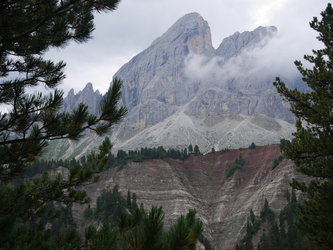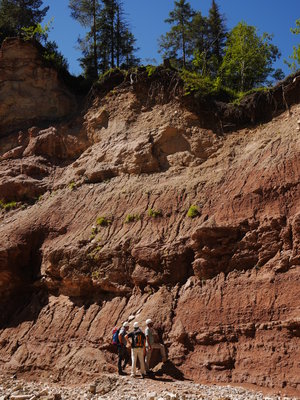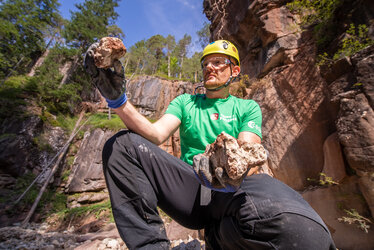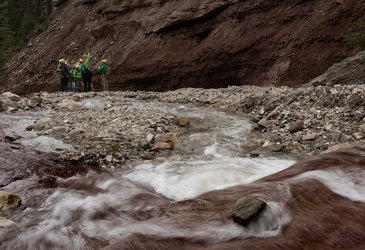

Moon science generation
What do you call three or more space fanatics? Interns.
Imagine landing your dream internship at the European Astronaut Centre (EAC), and then being unable to go into work. A group of excellent young professionals found themselves in this situation during the pandemic.
This week, however, 23 of these interns finally got their opportunity to visit the home of Europe’s Astronaut corps. The interns had been working on a range of projects developing tools to support astronaut training for missions to the Moon and beyond. Upon visiting, they were immediately immersed in the centre’s activities.
The group, imaged here logging data into the Electronic Field Book (EFB), experienced some of the geological training activities the centre provides. In dedicated sessions, armed with spectrometers, drawing booklets, microscopes and the appropriate clothing, the interns had to exercise rock recognition through the EFB, characterise samples, and provide feedback.
This geological experience was modelled off of ESA’s Pangea training course, a balanced mix of theory and field trips designed to hone astronauts’ geology skills. This year’s course with ESA astronaut Alexander Gerst and NASA astronaut Stephanie Wilson began earlier this month in the Italian Dolomites with lessons on fundamental geology knowledge and skills, and will continue in the volcanic landscapes of Lanzarote next month.
However, it wasn’t all work for the interns, who hail from Germany, France, Spain, Italy, Greece, The Netherlands, the UK and Poland. They also managed to meet three ESA astronauts, Thomas Pesquet, Luca Parmitano and Frank de Winne, and visit various EAC facilities being used for training, development and operations supporting the International Space Station (ISS).
From visiting locations such as the Eurocom console, to taking a trip to the Moon and the International Space Station in virtual reality, they got a feel for the broad range of work conducted at the centre.
During their internships, the students contributed to updates of a planetary mineralogical database, improved machine learning algorithms for recognition of minerals, and worked on the development and future applications of the Electronic Field Book – all of which contribute to the bigger picture of ESA’s role in space.
Read their first-hand account of a memorable two days on the ESA Caves blog.





